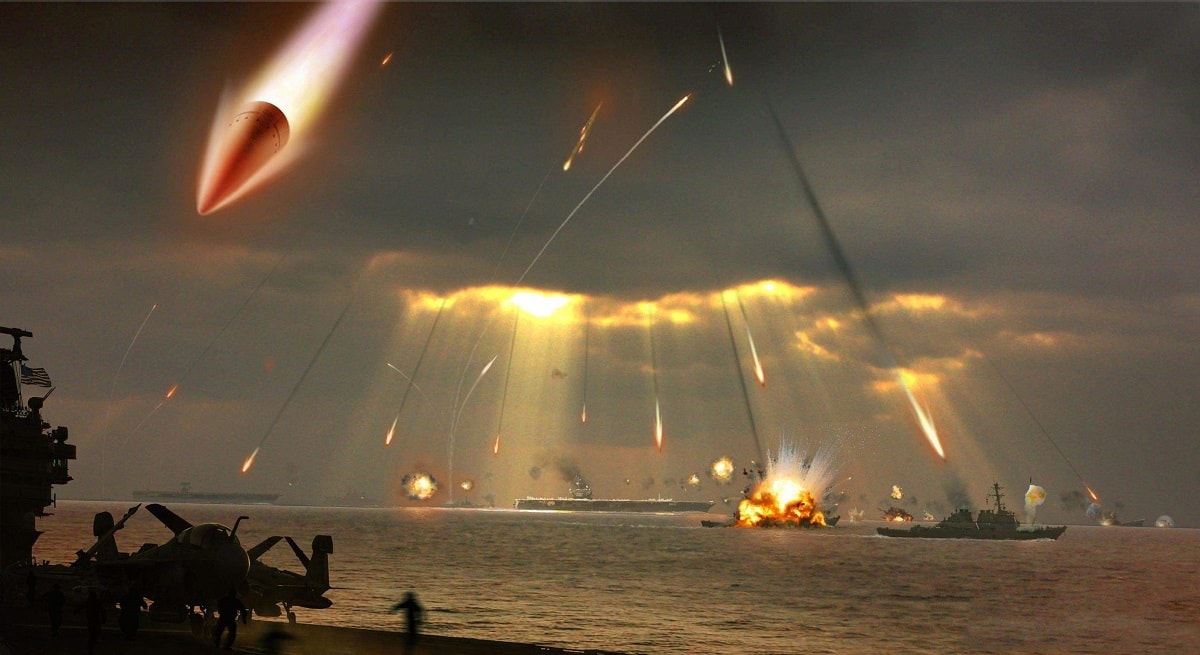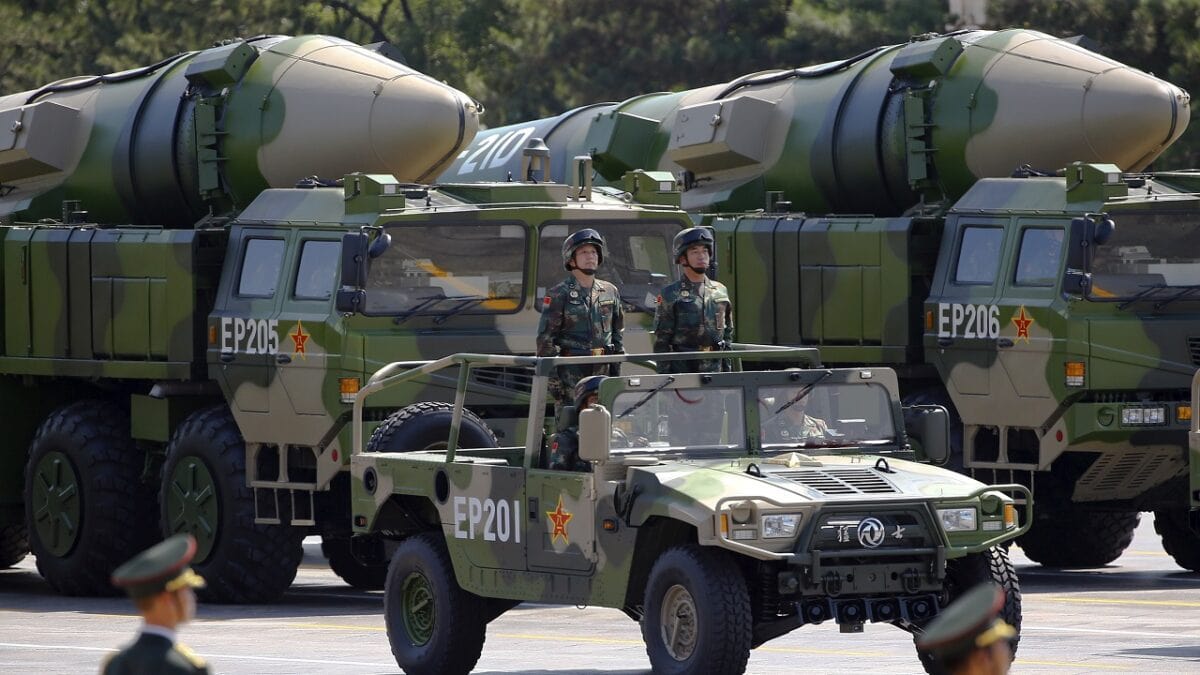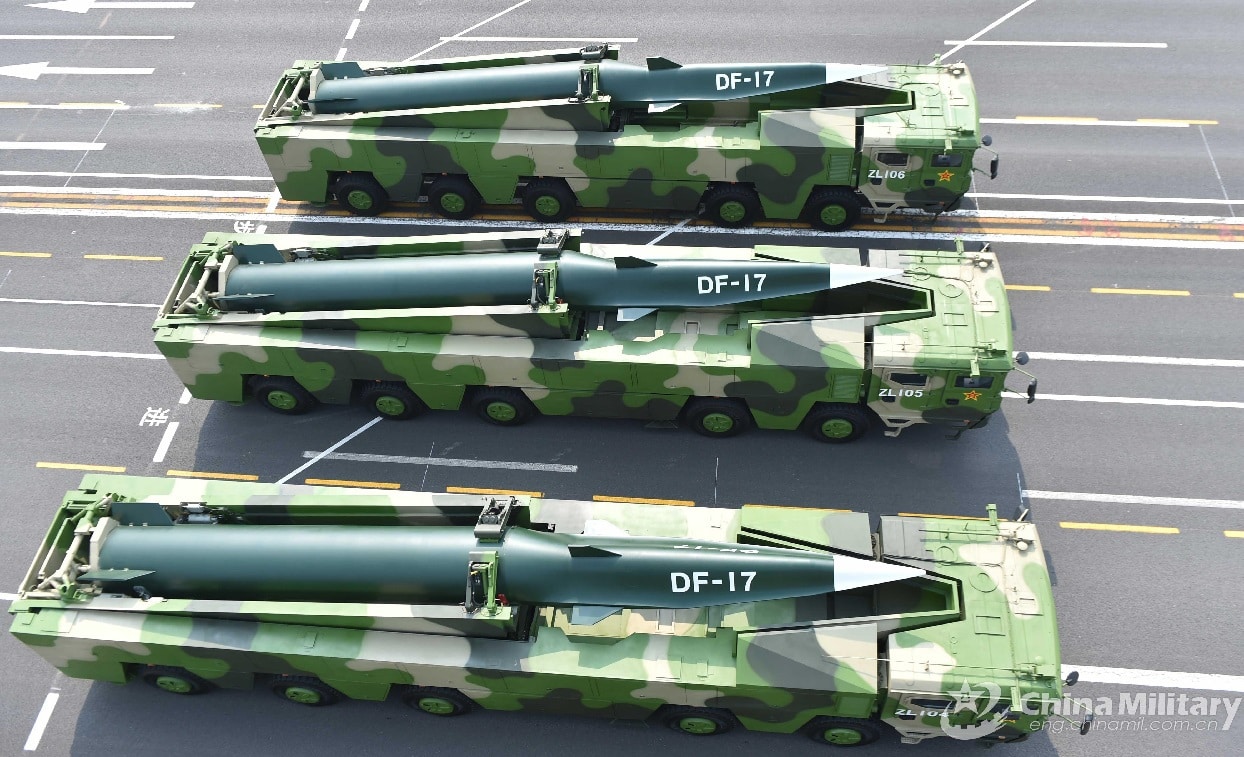There is no shortage of hype and concern regarding China’s growing arsenal of cruise and ballistic missiles in position to threaten U.S. territories and assets in the Pacific theater.
Yet, the full extent of the threat seems somewhat unknown as there are a number of critical variables to consider.
Threats to U.S. Bases and Territories
Initially, one might wonder how U.S. territories such as Guam might avoid being quickly destroyed, overwhelmed or simply taken over by a salvo of incoming Chinese missiles. Given the sheer size of China’s ballistic missile arsenal, avoiding assault might not be as easily achievable as it might initially seem.
Long-range Chinese ballistic missiles such as the DF-27 can reportedly reach ranges of 8,000km, a distance that places them well within reach of hitting Guam from the 2.952-mile distance from mainland China. However, how many DF-27s does China have on hand? What kind of guidance systems do they operate with and how precise is their targeting technology?
A report from May 2023 in the South China Morning Post says the hypersonic DF-27 has been in existence for several years, however, the size of its arsenal seems unknown. Clearly, a long-range hypersonic threat such as the DF-27 presents serious challenges for U.S. assets and territory in Guam. However, the number of DF-27s in China’s arsenal coupled with Beijing’s targeting ability and guidance technology seem unknown.
Located nearly 3,000 miles off the coast of mainland China, Guam would be hard to hit with land-based launchers. China’s famous DF-26 intermediate-range ballistic missile, for example, can reportedly travel 2,000 miles. While a threatening distance, that range would not reach Guam from mainland China, and many of China’s intermediate- and short-range ballistic missiles simply would not be able to reach Guam in sufficient numbers, if at all. Being only 100 miles from mainland China, Taiwan seems to be much more vulnerable to an impromptu Chinese ballistic missile attack.
Attack Guam from Sea by China?
Chinese warships armed with cruise missiles could clearly threaten Guam, however, the U.S. Navy maintains a strong forward presence in the Pacific, and warships within striking distance of Guam would easily be seen by satellites and drones.

Depiction of Chinese missiles attacking the U.S. Navy. Image: Chinese Internet.
There is also the question of Guam’s air defenses, the precise configuration of which is likely not known for security reasons. The emergence of newer kinds of intelligence, surveillance, and reconnaissance (ISR) technology, satellites, and drones, coupled with multi-domain networking and ground-based interceptors might make it difficult for a salvo of incoming Chinese ballistic missiles to overwhelm the territory of Guam.
The hypersonic threat presented by the DF-27, however, is quite different. There are cutting-edge efforts using low- and medium-earth orbit satellites, computer processing, and advanced networking technology to help defend against or intercept high-speed hypersonic missiles by developing a continuous “track,” yet these are nascent capabilities to an extent and, at the moment, hypersonic projectiles present a particular predicament or problem for air defenses given the sheer speed at which they attack.

Military vehicles carrying DF-21D ballistic missiles roll to Tiananmen Square during a military parade to mark the 70th anniversary of the end of World War Two, in Beijing, China, September 3, 2015. REUTERS/Damir Sagolj
Kris Osborn is the Military Affairs Editor of 19FortyFive and President of Warrior Maven – Center for Military Modernization. Osborn previously served at the Pentagon as a Highly Qualified Expert with the Office of the Assistant Secretary of the Army—Acquisition, Logistics & Technology. Osborn has also worked as an anchor and on-air military specialist at national TV networks. He has appeared as a guest military expert on Fox News, MSNBC, The Military Channel, and The History Channel. He also has a Masters Degree in Comparative Literature from Columbia University.

